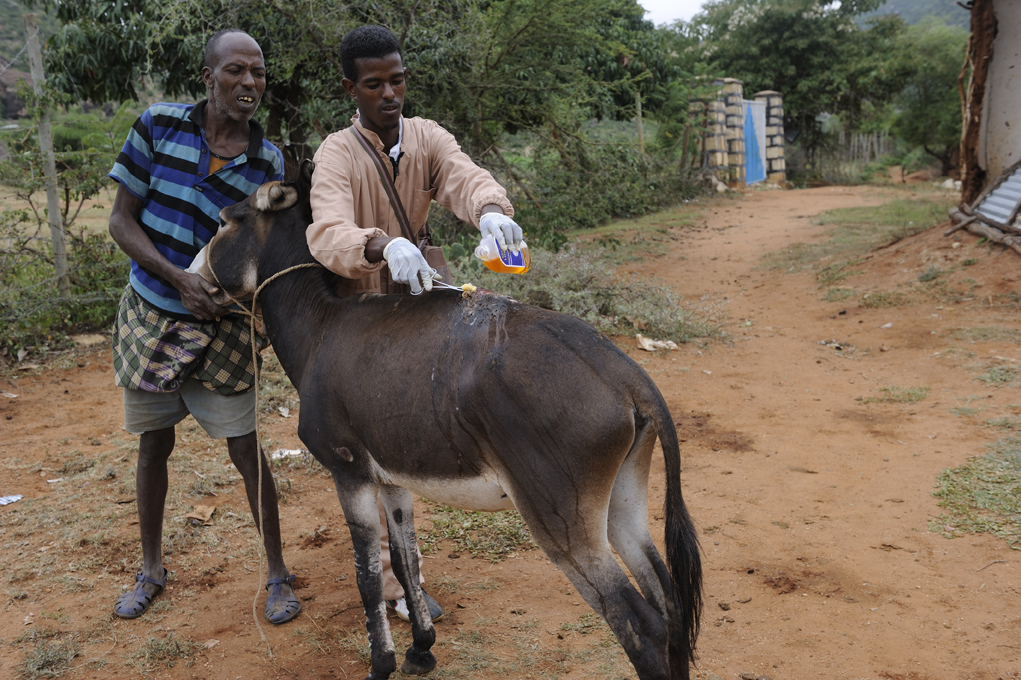|
University Of Basrah
The University of Basrah ( ''Jāmi'at Al Basrah'') is a public university situated in the city of Basra, Iraq. Founded in 1964 to meet the needs of southern Iraq, the University of Basrah was at first affiliated with the University of Baghdad, but in 1964 it became an independent body. Today the university consists of fourteen colleges located on three campuses around the city of Basra, with research facilities and student halls of residence. The University awards the degrees of BA, BSc, Higher Diploma, MA, MSc, MBBS and PhD. Colleges The university is composed of 22 colleges: * College of Literature * College of the Sciences * College of Engineering * College of Medicine * College of Pharmacy * College of Dentistry * College of Nursing * College of Agriculture * College of Management and Economics * College of Computer Science and Information Technology * College of Law and Politics * College of Physical Education * College of Veterinary Medicine * College of Fine Arts ... [...More Info...] [...Related Items...] OR: [Wikipedia] [Google] [Baidu] |
Public University
A public university, state university, or public college is a university or college that is State ownership, owned by the state or receives significant funding from a government. Whether a national university is considered public varies from one country (or region) to another, largely depending on the specific education landscape. In contrast a private university is usually owned and operated by a private corporation (not-for-profit or for profit). Both types are often regulated, but to varying degrees, by the government. Africa Algeria In Algeria, public universities are a key part of the education system, and education is considered a right for all citizens. Access to these universities requires passing the Baccalaureate (Bac) exam, with each institution setting its own grade requirements (out of 20) for different majors and programs. Notable public universities include the Algiers 1 University, University of Algiers, Oran 1 University, University of Oran, and Constantin ... [...More Info...] [...Related Items...] OR: [Wikipedia] [Google] [Baidu] |
Agriculture
Agriculture encompasses crop and livestock production, aquaculture, and forestry for food and non-food products. Agriculture was a key factor in the rise of sedentary human civilization, whereby farming of domesticated species created food surpluses that enabled people to live in the cities. While humans started gathering grains at least 105,000 years ago, nascent farmers only began planting them around 11,500 years ago. Sheep, goats, pigs, and cattle were domesticated around 10,000 years ago. Plants were independently cultivated in at least 11 regions of the world. In the 20th century, industrial agriculture based on large-scale monocultures came to dominate agricultural output. , small farms produce about one-third of the world's food, but large farms are prevalent. The largest 1% of farms in the world are greater than and operate more than 70% of the world's farmland. Nearly 40% of agricultural land is found on farms larger than . However, five of every six farm ... [...More Info...] [...Related Items...] OR: [Wikipedia] [Google] [Baidu] |
Date Palm
''Phoenix dactylifera'', commonly known as the date palm, is a flowering-plant species in the palm family Arecaceae, cultivated for its edible sweet #Fruits, fruit called dates. The species is widely cultivated across North Africa, northern Africa, the Middle East, the Horn of Africa, Australia, South Asia, and the desert regions of Southern California in the United States. It is Naturalisation (biology), naturalized in many Tropics, tropical and Subtropics, subtropical regions worldwide. ''P. dactylifera'' is the type species of genus ''Phoenix (plant), Phoenix'', which contains 12–19 species of wild date palms. Date palms reach up to 60–110 feet in height, growing singly or forming a Clumping (biology), clump with several stems from a single root system. Slow-growing, they can reach over 100years of age when maintained properly. Date fruits (dates) are oval-cylindrical, long, and about in diameter, with colour ranging from dark brown to bright red or yellow, depen ... [...More Info...] [...Related Items...] OR: [Wikipedia] [Google] [Baidu] |
Basrah
Basra () is a port city in southern Iraq. It is the capital of the eponymous Basra Governorate, as well as the third largest city in Iraq overall, behind Baghdad and Mosul. Located near the Iran–Iraq border at the north-easternmost extent of the Arabian Peninsula, the city is situated along the banks of the Shatt al-Arab that empties into the Persian Gulf. It is consistently one of the hottest cities in Iraq, with summer temperatures regularly exceeding . Built in 636 as a military camp, Basra played an important role as a regional hub of knowledge, trade and commerce during the Islamic Golden Age and is home to the first mosque built outside the Arabian Peninsula. It was a center of the slave trade in Mesopotamia, until the Zanj rebellion in 871. Historically, Basra is one of the ports from which the fictional Sinbad the Sailor embarked on his journeys. It has experienced numerous ruling shifts. In 1258, the city was sacked by the Mongols. Basra came under Portugu ... [...More Info...] [...Related Items...] OR: [Wikipedia] [Google] [Baidu] |
Polymer
A polymer () is a chemical substance, substance or material that consists of very large molecules, or macromolecules, that are constituted by many repeat unit, repeating subunits derived from one or more species of monomers. Due to their broad spectrum of properties, both synthetic and natural polymers play essential and ubiquitous roles in everyday life. Polymers range from familiar synthetic plastics such as polystyrene to natural biopolymers such as DNA and proteins that are fundamental to biological structure and function. Polymers, both natural and synthetic, are created via polymerization of many small molecules, known as monomers. Their consequently large molecular mass, relative to small molecule compound (chemistry), compounds, produces unique physical property, physical properties including toughness, high rubber elasticity, elasticity, viscoelasticity, and a tendency to form Amorphous solid, amorphous and crystallization of polymers, semicrystalline structures rath ... [...More Info...] [...Related Items...] OR: [Wikipedia] [Google] [Baidu] |
Marine Science
Oceanography (), also known as oceanology, sea science, ocean science, and marine science, is the scientific study of the ocean, including its physics, chemistry, biology, and geology. It is an Earth science, which covers a wide range of topics, including ocean currents, waves, and geophysical fluid dynamics; fluxes of various chemical substances and physical properties within the ocean and across its boundaries; ecosystem dynamics; and plate tectonics and seabed geology. Oceanographers draw upon a wide range of disciplines to deepen their understanding of the world’s oceans, incorporating insights from astronomy, biology, chemistry, geography, geology, hydrology, meteorology and physics. History Early history Humans first acquired knowledge of the waves and currents of the seas and oceans in pre-historic times. Observations on tides were recorded by Aristotle and Strabo in 384–322 BC. Early exploration of the oceans was primarily for cartography and mainly limited ... [...More Info...] [...Related Items...] OR: [Wikipedia] [Google] [Baidu] |
Iranian Studies
Iranian studies ( '), also referred to as Iranology and Iranistics, is an interdisciplinary field dealing with the research and study of the civilization, history, literature, art and culture of Iranian peoples. It is a part of the wider field of Oriental studies. Iranian studies is broader than and distinct from Persian studies, which is the study of the modern Persian language and literature specifically. The discipline of Iranian Studies focuses on broad trends in culture, history, language and other aspects of not only Persians, but also a variety of other contemporary and historical Iranian peoples, such as Kurds, Lurs, Gilakis, Talysh, Tajiks, Pashtuns, Ossetians, Baluchis, Scythians, Sarmatians, Alans, Parthians, Sogdians, Bactrians, Khwarazmians, and Mazandaranis. In medieval Iran The medieval Persian poet Ferdowsi, author of the Iranian national epic the ', can be considered the founder of Iranian studies in the sense that in his work he made a deliberate ... [...More Info...] [...Related Items...] OR: [Wikipedia] [Google] [Baidu] |
Marine Sciences
Oceanography (), also known as oceanology, sea science, ocean science, and marine science, is the scientific study of the ocean, including its Physical oceanography, physics, Chemical oceanography, chemistry, Biological oceanography, biology, and Marine geology, geology. It is an Earth science, which covers a wide range of topics, including ocean currents, Wind wave, waves, and geophysical fluid dynamics; fluxes of various chemical substances and physical properties within the ocean and across its boundaries; ecosystem dynamics; and plate tectonics and seabed geology. Oceanographers draw upon a wide range of disciplines to deepen their understanding of the world’s oceans, incorporating insights from astronomy, biology, chemistry, geography, geology, hydrology, meteorology and physics. History Early history Humans first acquired knowledge of the waves and currents of the seas and oceans in pre-historic times. Observations on tides were recorded by Aristotle and Strabo i ... [...More Info...] [...Related Items...] OR: [Wikipedia] [Google] [Baidu] |
Science
Science is a systematic discipline that builds and organises knowledge in the form of testable hypotheses and predictions about the universe. Modern science is typically divided into twoor threemajor branches: the natural sciences, which study the physical world, and the social sciences, which study individuals and societies. While referred to as the formal sciences, the study of logic, mathematics, and theoretical computer science are typically regarded as separate because they rely on deductive reasoning instead of the scientific method as their main methodology. Meanwhile, applied sciences are disciplines that use scientific knowledge for practical purposes, such as engineering and medicine. The history of science spans the majority of the historical record, with the earliest identifiable predecessors to modern science dating to the Bronze Age in Ancient Egypt, Egypt and Mesopotamia (). Their contributions to mathematics, astronomy, and medicine entered and shaped the Gree ... [...More Info...] [...Related Items...] OR: [Wikipedia] [Google] [Baidu] |
Education
Education is the transmission of knowledge and skills and the development of character traits. Formal education occurs within a structured institutional framework, such as public schools, following a curriculum. Non-formal education also follows a structured approach but occurs outside the formal schooling system, while informal education involves unstructured learning through daily experiences. Formal and non-formal education are categorized into levels, including early childhood education, primary education, secondary education, and tertiary education. Other classifications focus on teaching methods, such as teacher-centered and student-centered education, and on subjects, such as science education, language education, and physical education. Additionally, the term "education" can denote the mental states and qualities of educated individuals and the academic field studying educational phenomena. The precise definition of education is disputed, and there are ... [...More Info...] [...Related Items...] OR: [Wikipedia] [Google] [Baidu] |
Fine Arts
In European academic traditions, fine art (or, fine arts) is made primarily for aesthetics or creativity, creative expression, distinguishing it from popular art, decorative art or applied art, which also either serve some practical function (such as pottery or most metalwork) or is generally of limited artistic quality in order to appeal to the masses. In the aesthetic theories developed in the Italian Renaissance, the highest art was that which allowed the full expression and display of the artist's imagination, unrestricted by any of the practical considerations involved in, say, making and decorating a teapot. It was also considered important that making the artwork did not involve dividing the work between different individuals with specialized skills, as might be necessary with a piece of furniture, for example. Even within the fine arts, there was a hierarchy of genres based on the amount of creative imagination required, with history painting placed higher than still l ... [...More Info...] [...Related Items...] OR: [Wikipedia] [Google] [Baidu] |
Veterinary Medicine
Veterinary medicine is the branch of medicine that deals with the prevention, management, medical diagnosis, diagnosis, and treatment of disease, disorder, and injury in non-human animals. The scope of veterinary medicine is wide, covering all animal species, both List of domesticated animals, domesticated and wildlife, wild, with a wide range of conditions that can affect different species. Veterinary medicine is widely practiced, both with and without professional supervision. Professional care is most often led by a veterinarian, veterinary physician (also known as a veterinarian, veterinary surgeon, or "vet"), but also by paraveterinary workers, such as veterinary nurses, veterinary technicians, and veterinary assistants. This can be augmented by other paraprofessionals with specific specialties, such as animal physiotherapy or dentistry, and species-relevant roles such as farriers. Veterinary science helps human health through the monitoring and control of Zoonosis, zoonoti ... [...More Info...] [...Related Items...] OR: [Wikipedia] [Google] [Baidu] |









